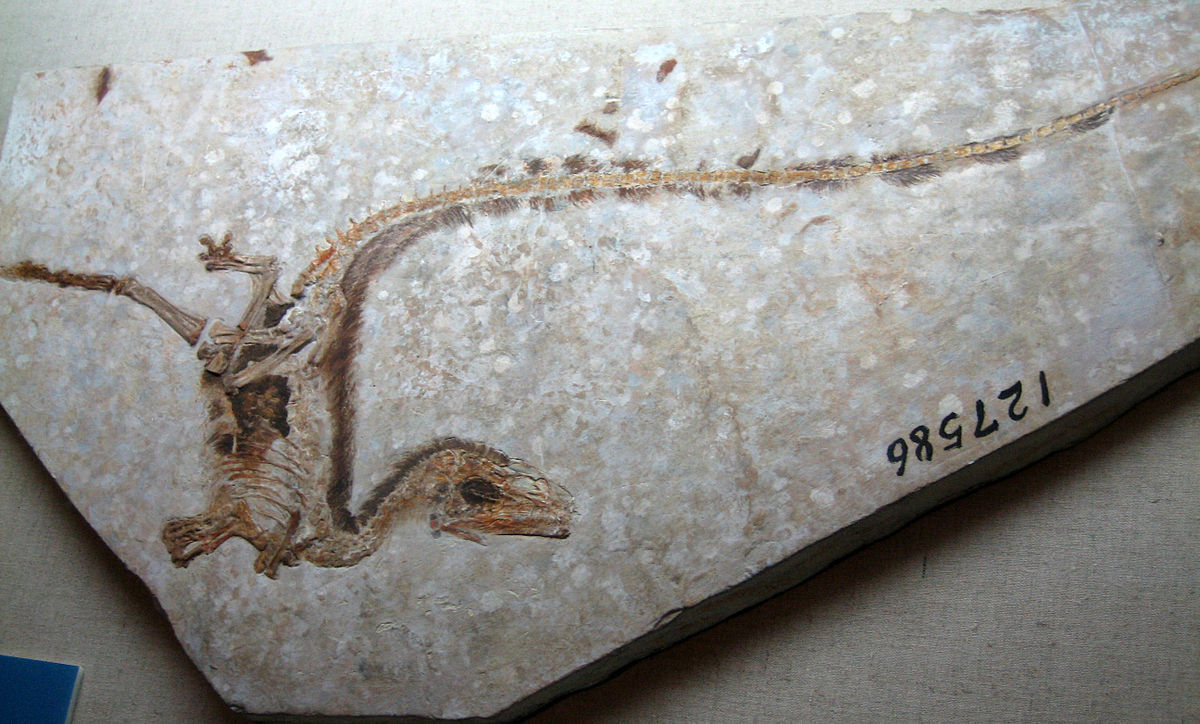Sinosauropteryx
Sigh-no-sore-op-eh-ryxName meaning: Chinese dragon wing
Time Period: Barremian to Aptian (Early Cretaceous) 124.6–122 Mya
Locations: : China-Liaoning Province-Yixian Formation
Taxonomy: Saurischia-Theropoda-Compsognathidae
Subspecies: S. dongi S. prima S. lingyuanensis
Characteristics ~ ~ ~ ~
Sinosauropteryx is a tiny compsognathid from China's Liaoning Province. China has been known for exceptionally preserved feathered specimens, and the Sinosauropteryx holotype is no exception. The exceptionally preserved fossils have enough feathery fur preserved to be able to identify the animal's possible coloration. The preserved melanosomes or pigment cells suggest a red to brown coloration with countershading on the underbelly and upon the face that forms a sort of bandit mask as well as banding across the tail. It had preserved animal bones in its stomach were small prey items such as rodents and small lizards, and its presumed diet along with potentially scavenging the temperate forests of early China. Sinosauropteryx laid small 1.4-inch eggs in clutches it may have protected or buried.

History & Fossils ~ ~ ~ ~
The holotype specimen S. prima GMV 2123 it is one of the most revolutionary fossils ever found. Found by farmer Li Yumin in 1996, he sold it to two different museums, expecting it to have high value and when the leading Paleontologist Phil Currie saw it he knelt over from astonishment. This fossil, then fourth, was the leading evidence for the argument that dinosaurs were related to birds.


Media Deptictions ~ ~ ~ ~
Jurassic World Evolution 2: Featured in the feathered species pack with Deinocherius Yutyrannus and Jeholopterus Sinosauropteryx is likely the best tiny dinosaur in the game. A lot of detail went into making this thing look accurate yet extremely appealing to the eyes. Its skins are all based upon the possible colors that it may have had and its patterns show off its bandit mask. Its animations are also very expressive, for the exit animation the second attempts to snatch the leader's tail but fails, and for the social the second pounces upon the other and forms a fluffy fight ball. As you’ve noticed, their tails are a big part of the design being fluffy and pointed upwards, so in the grass, you only really see their tails bobbing like a hunting fox.

